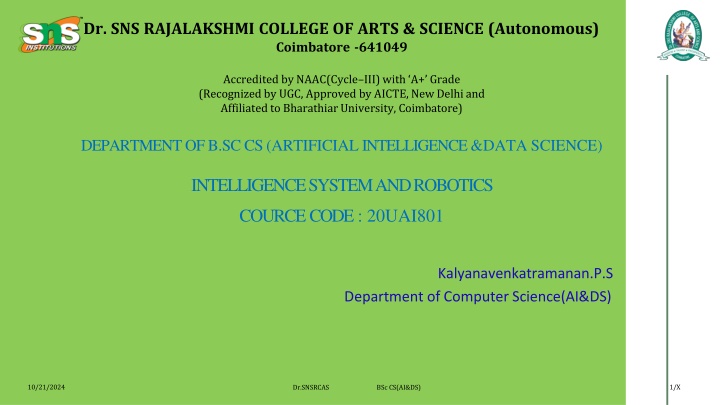
Speech Recognition: Technologies, Challenges, and Applications
Explore the world of speech recognition and its significance in enabling human-machine interaction, reducing reliance on physical interfaces, and enhancing accessibility for individuals with disabilities. Learn how speech recognition works, the technologies behind it, the challenges faced, and its diverse applications.
Download Presentation

Please find below an Image/Link to download the presentation.
The content on the website is provided AS IS for your information and personal use only. It may not be sold, licensed, or shared on other websites without obtaining consent from the author. If you encounter any issues during the download, it is possible that the publisher has removed the file from their server.
You are allowed to download the files provided on this website for personal or commercial use, subject to the condition that they are used lawfully. All files are the property of their respective owners.
The content on the website is provided AS IS for your information and personal use only. It may not be sold, licensed, or shared on other websites without obtaining consent from the author.
E N D
Presentation Transcript
Dr. SNS RAJALAKSHMI COLLEGE OF ARTS & SCIENCE (Autonomous) Coimbatore -641049 Accredited by NAAC(Cycle III) with A+ Grade (Recognized by UGC, Approved by AICTE, New Delhi and Affiliated to Bharathiar University, Coimbatore) DEPARTMENT OF B.SC CS (ARTIFICIAL INTELLIGENCE &DATA SCIENCE) INTELLIGENCE SYSTEM AND ROBOTICS COURCE CODE : 20UAI801 Kalyanavenkatramanan.P.S Department of Computer Science(AI&DS) 10/21/2024 1/X Dr.SNSRCAS BSc CS(AI&DS)
AGENDA Introduction How Speech Recognition Works Technologies in Speech Recognition Challenges In Speech Recognition Applications Of Speech
WHAT ISSPEECH RECOGNITION The process of converting spoken language into text or commands that machines can understand and act upon. It serves as a bridge between human communication and machine understanding,enabling hands-free interaction. IMPORTANCE Enables seamless human-robot interaction. Reduces reliance on physical interfaces like keyboards/touchscreens. Expands accessibility for people with disabilities.
HOW SPEECH RECOGNITION WORKS AUDIO SIGNAL CAPTURE:A microphone captures the speech as an analog signal. Signal is digitized for further processing. FEATURE EXTRACTION:Extracts key features from the audio such as pitch,tone,and frequency. ACOUSTIC MODELING:Converts audio features into phonemes(basic units of sound). LANGUAGE MODELING:Predicts word sequences using grammar and probability models. Helps correct recognition errors and ensures coherent output.
TECHNOLOGIES IN SPEECH RECOGNITION DEEP LEARNING MODELS: Process sequential data for speech patterns. Power modern tools like Whisper or GPT for faster and more accurate recognition. END-END SPEECH RECOGNITION: Processes raw audio directly into text without intermediate steps. EMBEDDED SPEECH RECOGNITION: On-device systems for real-time, offline processing. Common in smart assistants and IoT devices.
CHALLENGES IN SPEECH RECOGNITION NOISE HANDLING: External sounds can degrade recognition quality. SPEAKER VARIABILITY: Accents , speech impediments , and voice pitch variations are hard to standardize. WORD AMBIGUITY: Homophones (Eg : sea vs see) can cause misinterpretation. MULTI-LANGUAGE SUPPORT: Handling mixed languages or rapid language switching.
APPLICATIONS OF SPEECH RECOGNITION HEALTHCARE:Voice-to-text medical transcription,assistive technologies for disabled patients. SMART DEVICES:Controlling IoT devices like lights,thermostats and appliances. CUSTOMER SUPPORT:Interactive Voice Response(IVR) systems in call centers. AUTONOMOUS:Voice commands for navigation and control. EDUCATION:Speech Recognition for language learning tools and accessibility.
